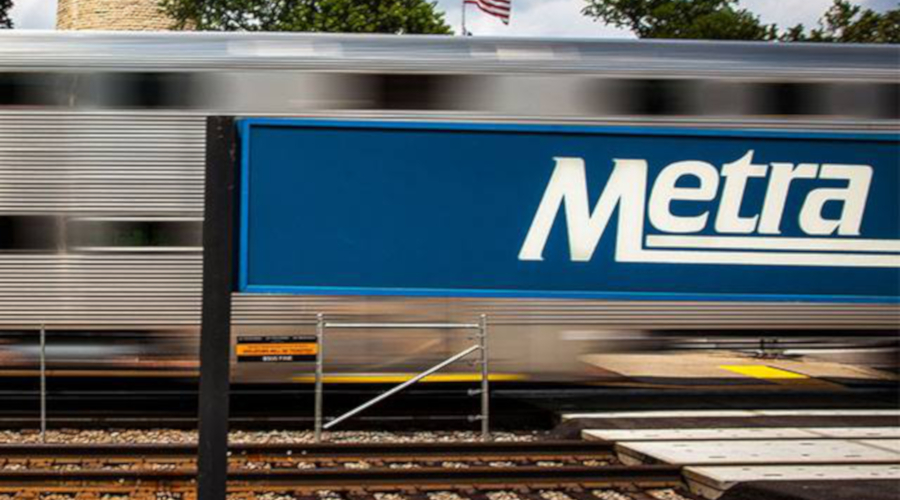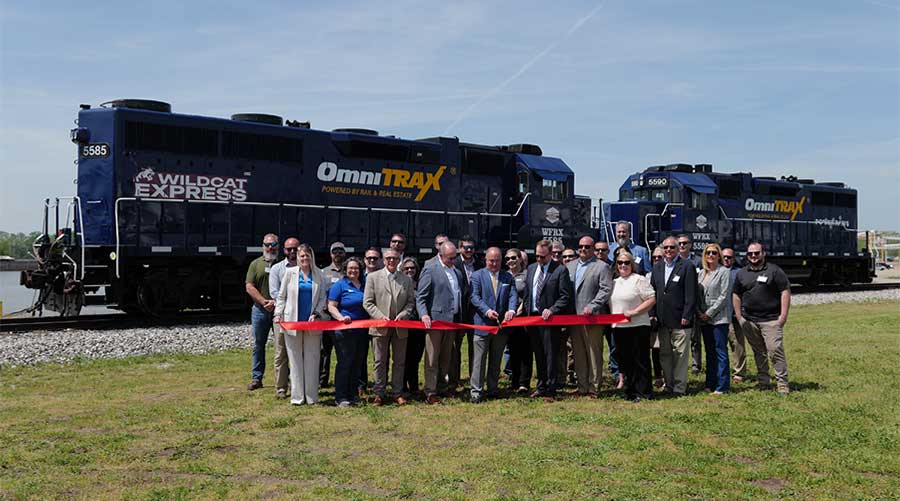Newsletter Sign Up
Stay updated on news, articles and information for the rail industry
Stay updated on news, articles and information for the rail industry
RAIL EMPLOYMENT & NOTICES
Rail News Home
High-Speed Rail
Rail News: High-Speed Rail
4/5/2011
Rail News: High-Speed Rail
Amtrak's Engel talks 'next-generation' high-speed rail
advertisement
Amtrak Vice President of High Speed Rail Al Engel has been on the job for six months, and what a busy six months it’s been. A week after Amtrak announced Engel’s appointment, the national intercity passenger railroad released a vision for high-speed rail (HSR) in the Northeast Corridor (NEC). In February, the railroad unveiled plans to build a new Hudson River tunnel that would increase commuter-rail capacity and accommodate HSR service between New Jersey and New York City.
Also in February, Florida Gov. Rick Scott announced he had rejected federal funds for the state’s Tampa-Orlando HSR corridor, effectively canceling the project; Amtrak was part of a consortium preparing to bid to design, build, operate, maintain and finance the system. Shortly after, U.S. Transportation Secretary Ray LaHood named the NEC as the 11th federally designated HSR corridor, which now enables Amtrak to compete for federal funds under the High-Speed Intercity Passenger Rail program. And for the past several months, new Congressional leaders have been questioning whether HSR service, including that in Amtrak’s money-making NEC, should be privatized.

“I took this job knowing the leadership would most likely change in Congress and I still had enough confidence that wisdom would prevail,” says Engel. “It’s tough to get there and painful to watch the process, but in the end, usually America has come through with the right decisions, and we have someone leading the country who really understands this infrastructure issue and how important it is to our continued economic vitality.”
In the meantime, Engel will continue to pursue Amtrak’s HSR agenda by working to advance NEC improvements and pursue high- and higher-speed rail opportunities in states throughout the country.
For starters, Amtrak is in what Engel calls “Phase 2” of developing the NEC high-speed rail vision. The railroad has proposed a $117 billion, 25-year program to create a next-generation HSR service between Boston, New York City and Washington, D.C., with trains reaching speeds up to 220 mph. Amtrak is defining project packages and plans to begin a programmatic Environmental Impact Statement later this year through the Federal Railroad Administration, which currently is developing a request for proposals for the work, says Engel.
“We have a phased program where we want to implement true, 220 mph service on the first operable segment, from New York to Philadelphia’s 30th Street Station,” he says. “We hope to have that in place by around 2022.”
While the FRA conducts the programmatic review, Amtrak will advance projects designed to upgrade existing NEC infrastructure. The top priority: the Gateway project, which calls for building two new tunnels under the Hudson River from New Jersey into Manhattan’s Penn Station.
The Gateway project is similar to New Jersey Transit’s Access to the Region’s Core (ARC) project, which was terminated last fall by Gov. Chris Christie. The $8.7 billion project also called for building twin tunnels into Manhattan and a new station beneath 34th Street in Manhattan. But the Gateway project is not a more expensive version of ARC, as some people have claimed.
“Critics have mistakenly said we’re replacing a $9 billion project with a $13.5 billion project, but the $13.5 billion includes other improvements,” says Engel.
For one, Amtrak’s version includes replacing the 100-year-old Portal Bridge over the Hackensack River with a higher structure, so it doesn’t have to be raised when marine traffic passes under it. That portion of the project alone will cost about $750 million, says Engel. Amtrak also is proposing to reconfigure tracks to provide access to a new Moynihan Station and add two tracks between Newark and New York City that can handle higher-speed trains.
In addition, Amtrak would expand Penn Station, and trains traveling through the new tunnels would surface at the facility. The ARC project had called for trains to terminate at a new station below 34th Street.
“You want to reach Penn Station, which is a major complex,” says Engel. “When you reach Penn Station, you then have access to Sunnyside yard, with four tunnels on the east side. … So, we can run through service as we do now on trains that use the other tracks that come into Penn Station.”
Amtrak currently is working to determine how much of the ARC project work NJ Transit did prior to the project’s cancellation can be reused for the Gateway project. The railroad hopes the environmental work completed on the New Jersey side will still be applicable.
“We will still have to do some new EIS work where we surface in Manhattan, but we’re in preliminary discussions with the FRA, which is doing the NEPA work, and they have advised us that the Gateway project can proceed as a project with its own EIS and doesn’t have to be part of the programmatic study,” says Engel. “That means we can move the project ahead and not wait for the results of a programmatic, which could take three years or more.”
Amtrak officials are hoping the project gets a boost with some federal HSR dollars. On April 4, the railroad submitted an application seeking a portion of Florida’s redirected funds to cover elements of the Gateway project, including $720 million to replace the Portal Bridge, $188 million to conduct preliminary engineering and environmental analysis for two new tunnels under the Hudson River into Manhattan, and $50 million to conduct preliminary engineering and environmental analysis for the Penn Station expansion.
In addition, the railroad requested $450 million for a project designed to support capacity increases, improve travel times and increase speeds up to 160 mph between Philadelphia and New York City by upgrading electrical power, signal systems and overhead catenary wires in New Jersey and Pennsylvania. And, Amtrak is seeking $15 million to conduct environmental work and preliminary engineering to examine replacement options for the more than century-old, movable Pelham Bay Bridge over the Hutchinson River in the Bronx. The structure is located on the Hell Gate Line that connects New York and New England. Amtrak plans to build a new bridge that would support service expansion and 110 mph operations.
In its FY2012 budget proposal, Amtrak is seeking money to purchase 40 new coaches to expand Acela train lengths from the current six cars to eight. The additional cars would provide 40 percent more seating capacity on the Acela. Amtrak hopes to add the new coaches within the next four years, says Engel, adding that the railroad also plans to purchase a next-generation Acela fleet that would operate up to 160 mph.
“This would precede the next-generation high-speed trainset fleet,” he says.
Although Amtrak does need federal funds to help cover large capital expenses, it generates revenue from its intercity passenger-rail services, particularly the Acela, which recovers 169 percent of the operating and maintenance costs, says Engel.
Amtrak expects the next-generation NEC high-speed rail service to be a money-maker, as well. The Gateway project will open up about two dozen new train slots, enabling Amtrak and New Jersey Transit to operate more service. And operating 220 mph service along the corridor will reduce travel times to about 90 minutes between Boston and New York City, and New York City and Washington, D.C.
“It will attract a tremendous volume of passengers away from autos and airlines,” says Engel, adding that Amtrak already has captured 69 percent of air-rail traffic on the NEC corridor south of New York, and 52 percent north of New York. “The projected surplus after O&M and capital renewal is $928 million per year, which can be used to amortize some debt for the $117 billion pricetag for Boston to Washington D.C.”
Still, Amtrak will require “large grants” from the federal government and states along the NEC in order to complete its long-term NEC vision.
In February, the Obama Administration announced it was proposing to invest $53 billion in intercity and high-speed rail during the next six years. And although many Republicans have since voiced opposition to that proposal, Engel believes there still will be a significant amount of money available to invest in high-speed rail.
“I’m confident that [House Transportation and Infrastructure Committee Chairman] Congressman Mica will be aggressive in pushing a transportation bill,” he says. “He is an advocate of infrastructure investment and he might have some different ideas on how it should be implemented. He wants private-sector involvement.”
And Amtrak isn’t opposed to involving the private sector. This month, the railroad plans to request bids from the private sector to develop a comprehensive business planning and financing study for the next-generation HSR project to determine how much private-sector investment Amtrak could generate, as well as other business opportunities associated with high-speed rail, such as station and real estate development. Amtrak hopes to have results by the end of the year.
“We want to get a good handle on how many billions of dollars we can generate,” says Engel. “We’re all for P3 opportunities where they make sense.”
Amtrak is all for advancing HSR outside the NEC, too. The railroad has been working with other states to submit applications for federal high-speed dollars, and has submitted an expression of interest to the California High Speed Rail Authority, noting its interest in helping the authority develop and implement its statewide high-speed rail system.
“I think we have a very major role to play leading the effort. We are the only operator of a high-speed rail system in the country,” says Engel. “States would be wise to consider the assets we bring to a project — the technical, operations and marketing aspect, we have a state-of-the-art reservation system, we know how to operate effectively with 13 different labor unions and we have freight relationships. We want to be a leader.”
— Angela Cotey
Also in February, Florida Gov. Rick Scott announced he had rejected federal funds for the state’s Tampa-Orlando HSR corridor, effectively canceling the project; Amtrak was part of a consortium preparing to bid to design, build, operate, maintain and finance the system. Shortly after, U.S. Transportation Secretary Ray LaHood named the NEC as the 11th federally designated HSR corridor, which now enables Amtrak to compete for federal funds under the High-Speed Intercity Passenger Rail program. And for the past several months, new Congressional leaders have been questioning whether HSR service, including that in Amtrak’s money-making NEC, should be privatized.

“I took this job knowing the leadership would most likely change in Congress and I still had enough confidence that wisdom would prevail,” says Engel. “It’s tough to get there and painful to watch the process, but in the end, usually America has come through with the right decisions, and we have someone leading the country who really understands this infrastructure issue and how important it is to our continued economic vitality.”
In the meantime, Engel will continue to pursue Amtrak’s HSR agenda by working to advance NEC improvements and pursue high- and higher-speed rail opportunities in states throughout the country.
For starters, Amtrak is in what Engel calls “Phase 2” of developing the NEC high-speed rail vision. The railroad has proposed a $117 billion, 25-year program to create a next-generation HSR service between Boston, New York City and Washington, D.C., with trains reaching speeds up to 220 mph. Amtrak is defining project packages and plans to begin a programmatic Environmental Impact Statement later this year through the Federal Railroad Administration, which currently is developing a request for proposals for the work, says Engel.
“We have a phased program where we want to implement true, 220 mph service on the first operable segment, from New York to Philadelphia’s 30th Street Station,” he says. “We hope to have that in place by around 2022.”
While the FRA conducts the programmatic review, Amtrak will advance projects designed to upgrade existing NEC infrastructure. The top priority: the Gateway project, which calls for building two new tunnels under the Hudson River from New Jersey into Manhattan’s Penn Station.
The Gateway project is similar to New Jersey Transit’s Access to the Region’s Core (ARC) project, which was terminated last fall by Gov. Chris Christie. The $8.7 billion project also called for building twin tunnels into Manhattan and a new station beneath 34th Street in Manhattan. But the Gateway project is not a more expensive version of ARC, as some people have claimed.
“Critics have mistakenly said we’re replacing a $9 billion project with a $13.5 billion project, but the $13.5 billion includes other improvements,” says Engel.
For one, Amtrak’s version includes replacing the 100-year-old Portal Bridge over the Hackensack River with a higher structure, so it doesn’t have to be raised when marine traffic passes under it. That portion of the project alone will cost about $750 million, says Engel. Amtrak also is proposing to reconfigure tracks to provide access to a new Moynihan Station and add two tracks between Newark and New York City that can handle higher-speed trains.
In addition, Amtrak would expand Penn Station, and trains traveling through the new tunnels would surface at the facility. The ARC project had called for trains to terminate at a new station below 34th Street.
“You want to reach Penn Station, which is a major complex,” says Engel. “When you reach Penn Station, you then have access to Sunnyside yard, with four tunnels on the east side. … So, we can run through service as we do now on trains that use the other tracks that come into Penn Station.”
Amtrak currently is working to determine how much of the ARC project work NJ Transit did prior to the project’s cancellation can be reused for the Gateway project. The railroad hopes the environmental work completed on the New Jersey side will still be applicable.
“We will still have to do some new EIS work where we surface in Manhattan, but we’re in preliminary discussions with the FRA, which is doing the NEPA work, and they have advised us that the Gateway project can proceed as a project with its own EIS and doesn’t have to be part of the programmatic study,” says Engel. “That means we can move the project ahead and not wait for the results of a programmatic, which could take three years or more.”
Amtrak officials are hoping the project gets a boost with some federal HSR dollars. On April 4, the railroad submitted an application seeking a portion of Florida’s redirected funds to cover elements of the Gateway project, including $720 million to replace the Portal Bridge, $188 million to conduct preliminary engineering and environmental analysis for two new tunnels under the Hudson River into Manhattan, and $50 million to conduct preliminary engineering and environmental analysis for the Penn Station expansion.
In addition, the railroad requested $450 million for a project designed to support capacity increases, improve travel times and increase speeds up to 160 mph between Philadelphia and New York City by upgrading electrical power, signal systems and overhead catenary wires in New Jersey and Pennsylvania. And, Amtrak is seeking $15 million to conduct environmental work and preliminary engineering to examine replacement options for the more than century-old, movable Pelham Bay Bridge over the Hutchinson River in the Bronx. The structure is located on the Hell Gate Line that connects New York and New England. Amtrak plans to build a new bridge that would support service expansion and 110 mph operations.
In its FY2012 budget proposal, Amtrak is seeking money to purchase 40 new coaches to expand Acela train lengths from the current six cars to eight. The additional cars would provide 40 percent more seating capacity on the Acela. Amtrak hopes to add the new coaches within the next four years, says Engel, adding that the railroad also plans to purchase a next-generation Acela fleet that would operate up to 160 mph.
“This would precede the next-generation high-speed trainset fleet,” he says.
Although Amtrak does need federal funds to help cover large capital expenses, it generates revenue from its intercity passenger-rail services, particularly the Acela, which recovers 169 percent of the operating and maintenance costs, says Engel.
Amtrak expects the next-generation NEC high-speed rail service to be a money-maker, as well. The Gateway project will open up about two dozen new train slots, enabling Amtrak and New Jersey Transit to operate more service. And operating 220 mph service along the corridor will reduce travel times to about 90 minutes between Boston and New York City, and New York City and Washington, D.C.
“It will attract a tremendous volume of passengers away from autos and airlines,” says Engel, adding that Amtrak already has captured 69 percent of air-rail traffic on the NEC corridor south of New York, and 52 percent north of New York. “The projected surplus after O&M and capital renewal is $928 million per year, which can be used to amortize some debt for the $117 billion pricetag for Boston to Washington D.C.”
Still, Amtrak will require “large grants” from the federal government and states along the NEC in order to complete its long-term NEC vision.
In February, the Obama Administration announced it was proposing to invest $53 billion in intercity and high-speed rail during the next six years. And although many Republicans have since voiced opposition to that proposal, Engel believes there still will be a significant amount of money available to invest in high-speed rail.
“I’m confident that [House Transportation and Infrastructure Committee Chairman] Congressman Mica will be aggressive in pushing a transportation bill,” he says. “He is an advocate of infrastructure investment and he might have some different ideas on how it should be implemented. He wants private-sector involvement.”
And Amtrak isn’t opposed to involving the private sector. This month, the railroad plans to request bids from the private sector to develop a comprehensive business planning and financing study for the next-generation HSR project to determine how much private-sector investment Amtrak could generate, as well as other business opportunities associated with high-speed rail, such as station and real estate development. Amtrak hopes to have results by the end of the year.
“We want to get a good handle on how many billions of dollars we can generate,” says Engel. “We’re all for P3 opportunities where they make sense.”
Amtrak is all for advancing HSR outside the NEC, too. The railroad has been working with other states to submit applications for federal high-speed dollars, and has submitted an expression of interest to the California High Speed Rail Authority, noting its interest in helping the authority develop and implement its statewide high-speed rail system.
“I think we have a very major role to play leading the effort. We are the only operator of a high-speed rail system in the country,” says Engel. “States would be wise to consider the assets we bring to a project — the technical, operations and marketing aspect, we have a state-of-the-art reservation system, we know how to operate effectively with 13 different labor unions and we have freight relationships. We want to be a leader.”
— Angela Cotey


 2025 MOW Spending Report: Passenger-rail programs
2025 MOW Spending Report: Passenger-rail programs
 Gardner steps down as Amtrak CEO
Gardner steps down as Amtrak CEO
 Guest comment: Oliver Wyman’s David Hunt
Guest comment: Oliver Wyman’s David Hunt
 Women of Influence in Rail eBook
Women of Influence in Rail eBook
 railPrime
railPrime








